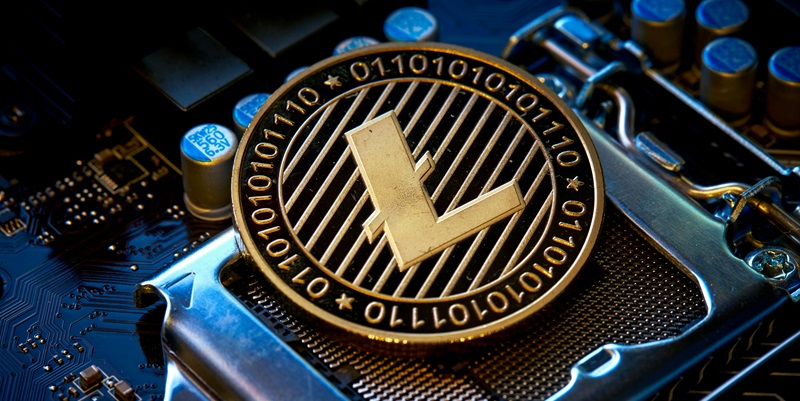The Litecoin (LTC) network has emerged as a formidable force within the rapidly evolving cryptocurrency market, highlighting its significance in digital assets and the broader adoption of Web3 protocols. With an impressive tally of more than 9.2 million on-chain holders, Litecoin signifies an essential component of the decentralized finance ecosystem. Institutional investments have further solidified its standing, driving both trading volumes and market value. Furthermore, LTC processes an average of $2.85 billion in large transactions daily, outperforming several of the top layer-one blockchains like Dogecoin (DOGE), which manages a daily transaction volume of $590 million.
Sustained Market Position and Financial Metrics
Robust Valuation and Trading Dynamics
Litecoin’s fully diluted valuation stands at approximately $5.79 billion, reflecting its strong market capitalization. This valuation is supported by a consistent average trading volume, bolstered by the significant presence of whale traders who influence market dynamics considerably. Despite experiencing several halvings and market corrections, Litecoin has shown resilience by maintaining a strong support level around $58. This stability serves as a foundation for anticipated bullish trends, with projections suggesting the coin could breach the $200 mark by year-end. A pivotal indicator supporting this forecast is the high Relative Strength Index (RSI), which points towards imminent gains.
Moreover, the LTC network’s large daily transaction volumes underscore its widespread utility and adoption. These indicators are not just numbers; they represent widespread confidence and adoption in the network. Institutional investments have also played a crucial role in shaping these metrics, drawing a broader investor base. Collectively, these factors fortify Litecoin’s market position and underline its significance in the crypto ecosystem.
Whale Traders’ Influence
Whale traders, or large holders of Litecoin, exert considerable influence over its market dynamics. Their trading activity has a profound impact, often driving price movements and liquidity trends within the network. The presence of these large players speaks to the credibility and trust vested in Litecoin as a long-term investment. With whale trading continuing to be a defining characteristic of the LTC network, its market stability remains relatively insulated from short-term fluctuations frequently witnessed in the broader crypto market.
Beyond mere trading volumes and price stability, whale traders bring an additional layer of oversight and market validation. Their activities often signal underlying strength in the network’s fundamentals. Consequently, other investors—both retail and institutional—tend to follow suit, reinforcing the demand and perceived value of Litecoin. This dynamic ensures that Litecoin continues to be a pivotal asset within the crypto landscape.
Emerging Threats and Opportunities
Competition from Layer-One Networks
However, Litecoin is not without its challenges, primarily from newer layer-one networks like Solana (SOL) and Toncoin (TON). These platforms offer advanced multichain smart contract capabilities, presenting stiff competition. The advantages offered by these emerging networks necessitate that Litecoin continually evolve to sustain its market relevance. Consequently, the integration of Web3 features is increasingly viewed as a strategic imperative for LTC to maintain its competitive edge.
The competitive landscape is characterized by rapid technological advancements and an accelerating pace of innovation. Solana and Toncoin, with their advanced features, capture market segments attracted to sophisticated multichain functionalities. For Litecoin, this means pivoting towards a development roadmap that incorporates similar or superior capabilities. Strategic partnerships and technological upgrades will be integral components of this evolution, ensuring Litecoin remains aligned with market demands and investor expectations.
Altcoin Adoption and Institutional Shifts
The broader market trends indicate an increased adoption of altcoins, driven by significant institutional shifts such as Ethereum’s transition from Proof-of-Work (PoW) to Proof-of-Stake (PoS) and the awaited approval of spot Ether ETFs in the United States. These developments underscore a strategic move towards diversified blockchain investments, signaling a potential altseason that could amplify interest in Litecoin and other altcoins. Despite some declining trends, such as Ethereum’s notable fund outflows, there’s still substantial interest in specific technologies and assets.
Altcoin adoption is not merely a trend but a reflection of the evolving preferences and risk appetites of institutional investors. As portfolios diversify, the relative attractiveness of Litecoin may increase, especially if it continues to demonstrate resilience and adaptability. This broader investment ecosystem highlights the need for Litecoin to not only maintain but expand its functionality and appeal, ensuring it remains an attractive option amidst a plethora of emerging digital assets.
Future Prospects and Strategic Adaptations
Importance of Innovation and Resilience
In summary, the Litecoin network stands as a pivotal entity within the cryptocurrency space, demonstrating robust on-chain activity and significant institutional interest. Its resilience, strategic adaptations, and whale trading activities position it strongly within the increasingly competitive crypto ecosystem. To sustain its competitive edge, Litecoin is likely to integrate more Web3 advancements, appealing to both institutional and retail investors amidst an evolving altcoin market landscape.
The need for continuous evolution cannot be overstated. As the market for blockchain technologies becomes more sophisticated, the ability to innovate and adapt will be key determinants of long-term success. For Litecoin, this means not just keeping pace with, but potentially outpacing, emergent technologies in its domain.
Strategic Roadmap and Market Integration
The Litecoin (LTC) network stands out as a major player in the rapidly changing cryptocurrency landscape, underscoring its vital role in digital assets and the expanding use of Web3 protocols. With over 9.2 million on-chain holders, Litecoin is a crucial element in the decentralized finance (DeFi) ecosystem. Its position is further bolstered by institutional investments, which have significantly increased its trading volumes and market capitalization. Litecoin’s network processes an average of $2.85 billion in large transactions each day, surpassing several leading layer-one blockchains. For instance, Dogecoin (DOGE) manages a considerably smaller daily transaction volume of $590 million. This robust performance highlights Litecoin’s efficiency and appeal in the world of digital currencies. Its ability to handle such substantial transaction volumes not only illustrates its technical prowess but also showcases its growing trust and adoption among users and investors alike, cementing its status as a fundamental part of the cryptocurrency market.

